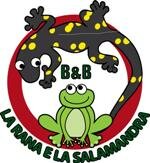
 Many towns in Piedmont claim to have invented this symbol of Piedmontese cuisine, but in fact it was born in the distant past on the coasts of Provence, where it was known as “Anchoiade”. It was certainly the merchants from Asti in the Middle Ages, during their expeditions to stock up on salt and anchovies, to know and to introduce them in their home, then spreading it across the wide area where they traded (all of Piedmont southern and north-western).
Many towns in Piedmont claim to have invented this symbol of Piedmontese cuisine, but in fact it was born in the distant past on the coasts of Provence, where it was known as “Anchoiade”. It was certainly the merchants from Asti in the Middle Ages, during their expeditions to stock up on salt and anchovies, to know and to introduce them in their home, then spreading it across the wide area where they traded (all of Piedmont southern and north-western).
 The ancient Provencal recipe, adopted by the country people around Asti, was later adapted to the uses and resources of the area, using the vegetables that were the basis of their poor cuisine.
The ancient Provencal recipe, adopted by the country people around Asti, was later adapted to the uses and resources of the area, using the vegetables that were the basis of their poor cuisine.
This rustic, popular dish, abhorred for a long time by the upper classes because of the all powerful presence of’garlic, left little trace in Piedmontese gastronomic texts, not until 1875 the novelist Roberto Sacchetti describes in Montechiaro d'Asti "Bagna Caòda" as we know it today.
In the countryside it is not seen as a poor dish for everyday consumption: it is something to be enjoyed in company, repared to celebrate special moments of community life, such as the end of the harvest.
Ingredients:
- 12 anchovies "Red Spain"
- 12 cloves of garlic
- 1/2 liter of extra virgin olive oil,
- 200 grams of butter,
- typical of Piedmont vegetables (both raw and boiled),
- eggs
- slices of polenta
Preparation
The preparation of this sauce with garlic, oil and anchovies has specific rules, not to misrepresent the recipe of the ancient tenants.
First the anchovies must be "Spain's Red”, seasoned at least a year, just removed from the salting, clean, washed in water and wine, well dried and de-boned (at least 2 or 3 anchovies per person).
Garlic – real "soul" of the dish – must be present to an extent of 2-3 cloves per person, boiled or not in water or milk, only freed from the bud, cut into thin slices, a few hours left in a bowl of cold water.
The oil extravergine di oliva and takes no less than half a cup per person;
Vegetables by dipping in the sauce must be all those of the habitat of Piedmontese gardens, excluding some unsuitable because aromatic too (for example, celery, fennel, the radishes); between these cardi gobbi in Nice, Peppers raw, roasted and peeled peppers, Peppers preserved in vinegar and rasps, topinambour, green cabbage, Red and white, White hearts of Escarole and endive, fresh leeks, long spring onions, White turnips, baked beetroot, boiled cauliflower, boiled cabbage hearts, baked onions, white potato dishes boiled in their skins, Apples, slices of roasted or fried pumpkin, hot polenta slices, roasted or fried, baskets of fresh eggs get-out in the last spoonful of bagna cauda which remains in the pan to crock.
Cooking – and this is the decisive point for a wet caòda good, healthy and digestible – must be short and kept low heat: in a large earthenware pot you have to put all the sliced garlic and dried, with a tbsp of oil and a piece of butter. You have to cook it over low heat for at least half an hour, garlic stirring with a wooden spoon, minding well that not darken; the slices of garlic should soften and melt forming a homogeneous cream white and fluffy. At this point we need to add all the oil and anchovies, and cook the sauce to low heat just enough to liquefy the anchovies, to create a fragrant garlic cream light brown. The bagna caòda is ready and should be eaten very hot, just prepared.
You can bring to the table the cooking dish with under the special spirit stove, or – preferably – use "sciunfiette” (earthenware bowls) s with a candle lit under, for each diner.
Take directly in hand and dip for vegetables, trying to collect the bagna caòda like spoon.
The dish should be accompanied with red wine "robust", best Barbera "new".






 Course ONAF for cheese Tasters in Asti
Course ONAF for cheese Tasters in Asti  Golosaria *
Golosaria * 


 Do you want to highlight your event or business?
Do you want to highlight your event or business? Alessandra Scotti Web Design Art Director, graphicsdesign, webdesigner
Alessandra Scotti Web Design Art Director, graphicsdesign, webdesigner B&B La Rana e La Salamandra House for rent and Bed & Breakfast in Loazzolo
B&B La Rana e La Salamandra House for rent and Bed & Breakfast in Loazzolo Educational Farm ArteMiele Genuine products and educational workshops to discover bees and silkworms
Educational Farm ArteMiele Genuine products and educational workshops to discover bees and silkworms